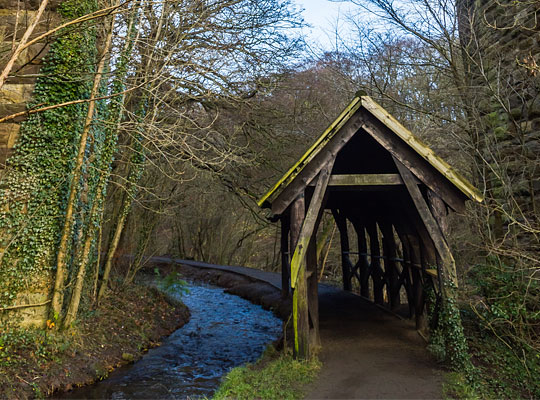Camps Viaduct
Camps Viaduct














The Camps branch of the North British Railway was surveyed by engineer Thomas Bouch in November 1865 and took about 18 months to construct, opening in the summer of 1867. It was a modest single-track affair, 2½ miles in length and built to serve the extensive quarries, brickworks and limekilns at Camps. The Caledonian Railway had completed a rival route to the same site a few months earlier. A later extension saw the length of the NBR branch increase to almost 3¾ miles.
As a minerals railway, its history is not well documented. It is believed that the existing Camps Viaduct – crossing the River Almond and adjacent canal feeder – dates from 1885, suggesting that it is either a replacement structure or the line originally stopped short of the river.
Built predominantly in stone, the viaduct has nine spans and reaches a height of 75 feet above the water. The brick arches, exhibiting six rings, are supported on rock-faced rubble piers; those standing in the river are protected by substantial cutwaters. Dressed stone was used for the low parapets, on top of which are iron railings.
The line beyond Pumpherston closed on 1st January 1959 – marking the end of the viaduct’s railway life – however trains continued to serve the oil works until 1981 via a stub from Uphall Junction.
Today Camps Viaduct remains open to walkers, cyclists and horse riders, protected by a Grade B listing. It provides a link to Uphall Station from East Calder, forming part of the Almondell & Calderwood Country Park.







